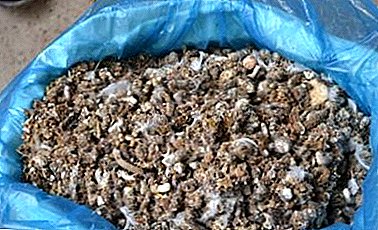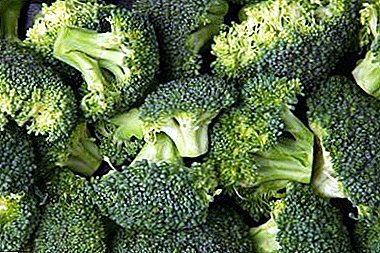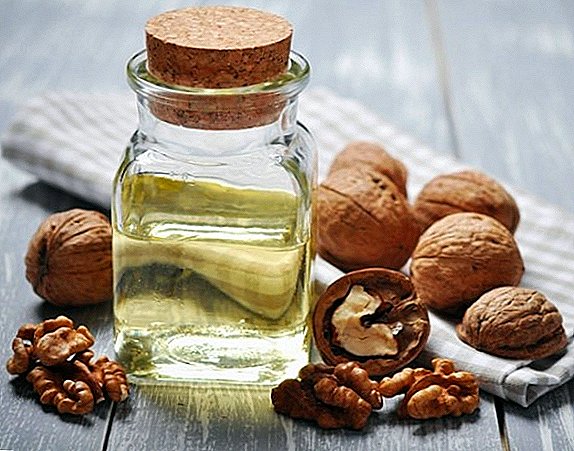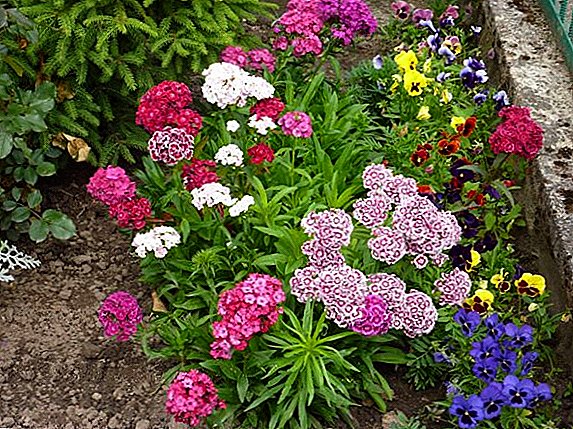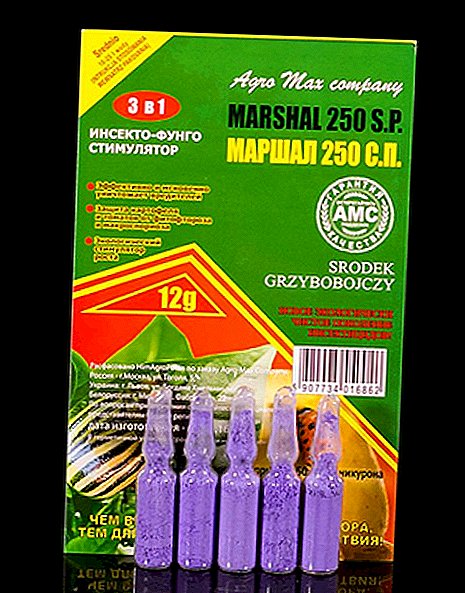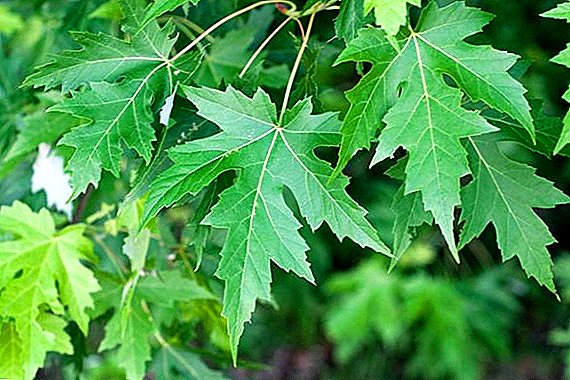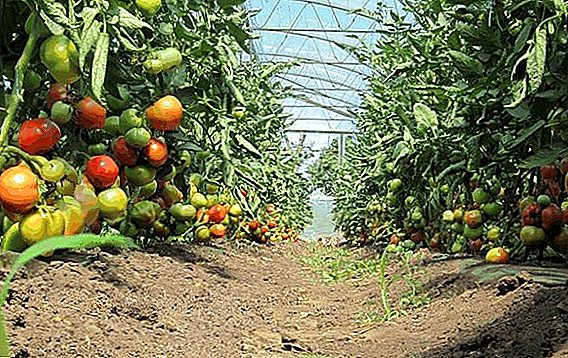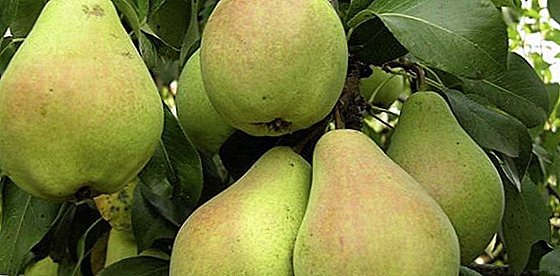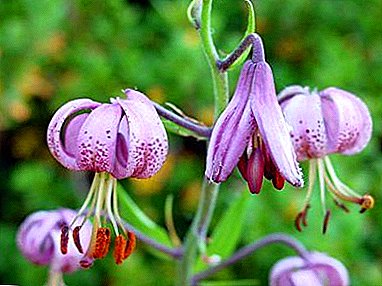 It is not for nothing that gardeners like to plant dahlias in flowerbeds, because these flowers have an unimaginable number of varieties. Different types of dahlias differ in many parameters: the height of the stem, the size and shape of the buds, the arrangement of the petals, the conditions of growth and care, and the color gamut.
It is not for nothing that gardeners like to plant dahlias in flowerbeds, because these flowers have an unimaginable number of varieties. Different types of dahlias differ in many parameters: the height of the stem, the size and shape of the buds, the arrangement of the petals, the conditions of growth and care, and the color gamut.
A little bit about the colors of autumn
The second name of the flower is Dahlia, both names are given by the names of botanists: I. Georgi and A. Dahl. Dahlias belong to the Astrov family, the countries of South America are considered the birthplace of flowers.
Did you know? The Mayan tribes before their holy rituals decorated their temples with dahlias. Aztec tribes grew dahlias as medicinal plants and for use in food. The Indians considered these flowers as messengers of the gods, gifts of the sun and worshiped them.
 It is impossible to tell about all varieties - there are more than ten thousand of them, but a few words can be said about the most common ones. Inflorescences of dahlias can be either gigantic or miniature.
It is impossible to tell about all varieties - there are more than ten thousand of them, but a few words can be said about the most common ones. Inflorescences of dahlias can be either gigantic or miniature.
Their petals have very different shapes and colors. In cactus dahlias petals look like thick needles, like twisted into a tube.
Spherical dahlias are distinguished by terry inflorescences with tightly knit needle-shaped petals forming a ball. Pompon dahlias resemble the previous species, but smaller in size.
A variety of dahlias is striking, and the color scheme overshadows the rainbow - so many tones and shades of these true royal colors.
How to plant dahlias
All types of soil are suitable for plants under conditions of fertility, friability and moisture holding capacity. It is not recommended to plant them near groundwater - dahlias do not accept excessive moisture.
 It is undesirable to plant next to plants with a strong root system, as they pull all the nutrients out of the soil. The soil for the dahlias is prepared, observing the approximate proportions: a humus spade, a pinch of bone meal, a little slaked lime. Before planting, a pit of 30x30 cm in size is filled up to half with this mixture.
It is undesirable to plant next to plants with a strong root system, as they pull all the nutrients out of the soil. The soil for the dahlias is prepared, observing the approximate proportions: a humus spade, a pinch of bone meal, a little slaked lime. Before planting, a pit of 30x30 cm in size is filled up to half with this mixture.
Terms of planting in open ground
In the second decade of May, tubers with eyes are planted. Grown up seedlings - in early June, when frosts are excluded.
Site selection and soil preparation
Draft-proof, open and sunlit area - This is the place where you can plant dahlias. No need to plant near high fences and walls, close to trees or high growing bushes: the shadow will not allow dahlias to fully develop and bloom.
Before planting flowers, the ground should be well loosened and sprinkled with bone meal. For the prevention of parasites that harm the roots, you can make granulated insecticides in the soil. If sick plants were growing before dahlias, treat the soil with formalin or copper sulfate.
Preparation of tubers for planting
 An ungrown tuber is laid on the bottom of the fossa, with a peephole up. They fall asleep with soil, they water it, and as it grows they sprinkle the earth in order to cover it completely. Tubers with sprouts before planting are well watered, so that the soil on its roots will be lumped, then it is planted together with the soil in a hole.
An ungrown tuber is laid on the bottom of the fossa, with a peephole up. They fall asleep with soil, they water it, and as it grows they sprinkle the earth in order to cover it completely. Tubers with sprouts before planting are well watered, so that the soil on its roots will be lumped, then it is planted together with the soil in a hole.
How to care for dahlias in the country
Caring for dahlias is no different from caring for other ornamental plants: attention, timely watering and fertilizing, cleaning weeds that interfere with proper growth and nutrition.
Watering and feeding the soil
In hot weather, the flowers need to be watered every day, at the end of the season watering is reduced. It is advisable to spray dahlias in the evenings with settled water at room temperature. During the period of active growth, it is recommended to tie dahlias so that they do not break under their own weight.
In order for dahlias to grow well and bloom magnificently, they need to be fed at least three times during the summer period with organic fertilizers. It may be cow dung or bird droppings diluted with water. During the flowering period twice a month, the flowers are fertilized with potash and phosphorus solutions.
Loosening and weeding the soil
After each watering it is necessary to loosen the soil, saturating it with oxygen. After the formation of dahlia buds, the soil around the roots is mulched with humus or peat.
Important! To buds beat tight and fluffy bloomed, you need to remove the lower shoots during the growth of dahlias. Carry out the pasynkovaya procedure before the buds are tied.
 Small or poorly developed buds are removed, leaving one or two healthy ones out of three buds in the inflorescence. Blooming inflorescences are also removed so that they do not delay the development of buds.
Small or poorly developed buds are removed, leaving one or two healthy ones out of three buds in the inflorescence. Blooming inflorescences are also removed so that they do not delay the development of buds.Weeding is imperative - removing weeds prevents diseases and nutrient deficiencies. In the period of drought, it is desirable to spud the plants, so the moisture will last longer.
Digging and storing root dahlia in winter
It is worth knowing how and at what time to remove dahlias for storage for the winter. The timing of digging depends on the weather in your area, usually the beginning or end of October, before the onset of severe frosts.
It is necessary to cut the stems of the plant with a secateur, leaving 15 cm. Carefully dig it out so as not to damage the roots. For example, forks, making digging from several sides. Leave them for two weeks in a cool place, then put in boxes, cover with sand and peat and store in a cellar.
From time to time it is important to check whether the roots are not getting sick, whether they are dry. If the roots dry up, you can slightly spray them with water.
Attention! Before leaving the tubers for storage in the cellar, it is advisable to treat them with a solution of lime or ashes from diseases.
Dahlia Breeding Methods
To get a lush, flowering, healthy plant, it is important to know how to plant dahlias correctly. The main rule is the quality and health of planting material. Tuber plants must have strong sprouts, and cuttings must have small roots and shoots.
Division root root
 There are no complicated recipes for growing dahlias from tubers. In spring, eyes appear on dahlia tubers, like on potatoes. At this time, you can divide the tubers, soaking them for half a day.
There are no complicated recipes for growing dahlias from tubers. In spring, eyes appear on dahlia tubers, like on potatoes. At this time, you can divide the tubers, soaking them for half a day.
Divided tubers are planted in seedling boxes in a moist soil. Leave the tuber neck open. Storage temperature must be at least 15°C.When watering, it is advisable not to get a cut near the neck. The time when dahlias are planted in the spring in the ground is the month of May.
Cuttings
The cutting is carried out in the middle of winter. To begin with, germinate the tubers, and then cut from them grown to 7 cm sprouts with a piece of the root collar. Sand is poured into the pot chosen for the cutting.
You can process the tips of the cutting "Kornovin", and then plant in a pot, regularly water and air. When the cuttings germinate, you can plant them in open ground.
Did you know? When cutting the dahlia at the cut, shoots reappear. This allows you to receive planting material up to three times.
Growing dahlias from seeds
 This breeding method is used for annual and non-double dahlias, as well as for breeding new varieties. With the seed method, dahlias often lose the quality properties of their variety, they often get sick. If you decide to propagate dahlias with seeds, they can be sown both in open ground and in boxes for seedlings in the winter.
This breeding method is used for annual and non-double dahlias, as well as for breeding new varieties. With the seed method, dahlias often lose the quality properties of their variety, they often get sick. If you decide to propagate dahlias with seeds, they can be sown both in open ground and in boxes for seedlings in the winter.
Diseases and pests of dahlias, combating them
Dahlias are susceptible to many diseases: viral, bacterial and fungal. When viral yellow ring spot the tips of the leaves are decorated with bright yellow rings and lines.
Bronze different green light circles in the middle of the leaves, while the leaves die. Virus mosaic purses the leaves. The plant grows poorly and blooms, from a normal bush becomes a dwarf. Oak mosaic characterized by pale outlines on the leaves of oak leaves. Unfortunately, the plant that picked up the virus needs to be destroyed, and the tools with which you have processed it should be thoroughly disinfected, as is the ground.
 Bacterial cancer and fading cancer. In the first case, growths are formed on the root system of the plant. Roots rot and contaminate the soil around them, disease-causing bacteria remain in the soil for up to five years. The second case is characterized by the appearance of light green brush-shaped processes. In these diseases, the plants are also destroyed.
Bacterial cancer and fading cancer. In the first case, growths are formed on the root system of the plant. Roots rot and contaminate the soil around them, disease-causing bacteria remain in the soil for up to five years. The second case is characterized by the appearance of light green brush-shaped processes. In these diseases, the plants are also destroyed.
Diseases to fight against: verticillosis, spotting, blackleg, powdery mildew and decay. Signs of these diseases: a darkened, thinned stem (blacklegyellowness and sudden wilt (verticillosis), yellowing and decay (white rot) white scurf (powdery mildew).
Powdered with mildew, the plant should be sprayed with preparations containing copper, and repeat the procedure after two weeks. In other cases, the affected areas of the plant are cut, and the rest is treated with various drugs that can be bought at any flower shop.
 Insect parasites that attack dahlias: aphids, thrips, bedbugs, wireworms, nematodes. If they appear, spray the plant with a solution of chlorophos, and tobacco infusion can be used against the aphids.
Insect parasites that attack dahlias: aphids, thrips, bedbugs, wireworms, nematodes. If they appear, spray the plant with a solution of chlorophos, and tobacco infusion can be used against the aphids.
The wireworm, especially the larvae, as well as the cabbage caterpillar, nematodes and woodlice need to be harvested, and then water the plant with karbofos.
Dahlias on your site will create a unique color palette. These plants are good in and of themselves, and in combination with other ornamental shrubs and flowers. All they need is attention and timely care.


